What clashes here of wills gen wonts
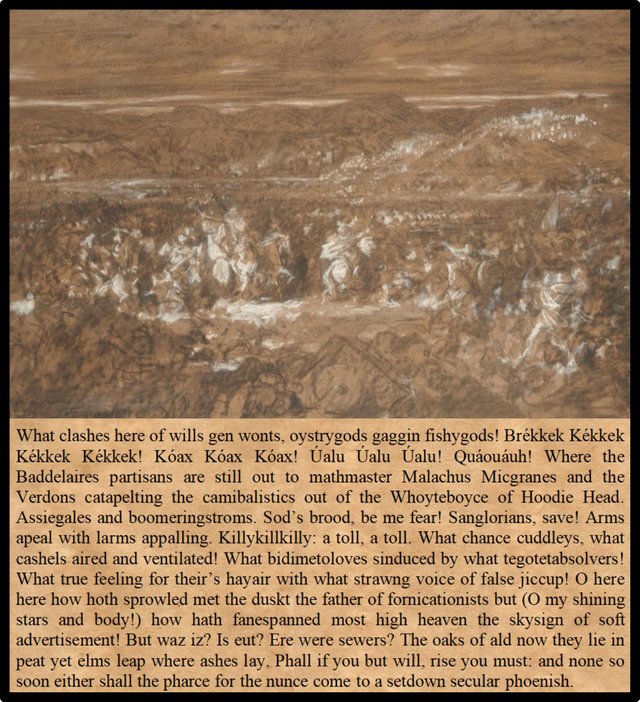
If the first three paragraphs of James Joyce’s Finnegans Wake answer the questions Where?, When? and What?, then the fourth paragraph surely answers the question How?
How does the story of Finnegans Wake unfold? How does Giambattista Vico’s eternal wheel of history continue to turn? What is the driving force behind it? Joyce found the answer to these questions in the works of another Italian philosopher, Giordano Bruno of Nola. Drawing upon the teachings of his predecessors Heraclitus and Nicholas of Cusa, Bruno adopted the doctrine of coincidentia oppositorum, or the unity of opposites. Joyce himself once summed up this idea in a letter to his patron Harriet Shaw Weaver:
His philosophy is a kind of dualism—every power in nature must evolve an opposite in order to realize itself and opposition brings reunion etc etc. (Letters of James Joyce 27 January 1925)
Joyce was probably paraphrasing from the eleventh of Samuel Taylor Coleridge’s Philosophical Lectures:

In short, the groundwork of [Bruno’s] philosophy was ... the law of likeness, arising from what is called the polar principle, (ie in order to manifest itself every power must appear in two opposites, but these two opposites having a ground of identity were constantly striving to reunite, but not being permitted to pass back to their original state, which would amount to annihilation, they pressed forward and the two formed a third something) and in this manner [he] traced in [his] trichotomous philosophy the facts in nature and oftentimes with most wonderful and happy effects. (Coleridge 323, edited for clarity)
Bruno’s principal treatment of this theme occurs in De la Causa, Principio, et Uno (Cause, Principle, and Unity), a set of five dialogues published in London in 1584. In the fifth dialogue he discusses the coincidence of opposites. James Lewis McIntyre’s study of Bruno and his philosophy, which was reviewed for the Dublin Daily Express by a twenty-one¬-year-old James Joyce, gives the following analysis:
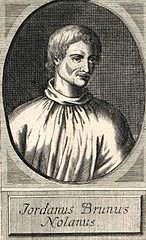
The concluding portion of this dialogue and of the work is taken up with the doctrine of the Coincidence of Contraries, which derives from that of the unity and coincidence of all differences, and which, although it was undoubtedly contained in his own system, Bruno obtained directly from Nicholas of Cusa. It is an indirect proof, from the side of particular things themselves, of the identity of all in the One. The first illustrations are geometrical. The straight line and the circle, or the straight line and the curve, are opposites; but in their elements, or their minima, they coincide, for, as Cusanus saw, there is no difference between the smallest possible arc and the smallest possible chord. Again, in the maximum there is no difference between the infinite circle and the straight line; the greater a circle is, the more nearly it approximates to straightness ... as a line which is greater in magnitude than another approximates more nearly to straightness, so the greatest of all ought to be superlatively, more than all, straight, so that in the end the infinite straight line is an infinite circle. Thus the maximum and the minimum come together in one existence, as has already been proved, and both in the maximum and in the minimum, contraries are one and indifferent ...
So also the “principle” of corruption and of generation is one and the same. The end of decay is the beginning of generation; corruption is nothing but a generation, generation a corruption. Love is hate, hate is love in the end; hatred of the unfitting is love of the fitting, the love of this the hatred of that. In substance and in root, therefore, love and hate, friendship and strife, are one and the same thing. Poison gives its own antidote, and the greatest poisons are the best medicines. There is but one potency of two contraries, because contraries are apprehended by one and the same sense, therefore belong to the same subject or substrate ... (McIntyre 176-177)
Bruno himself concluded with the words:
He who would know the greatest secrets of nature, let him regard and contemplate the minima and maxima of contraries and opposites. Profound magic it is to know how to extract the contrary after having found the point of union. (McIntyre 178)
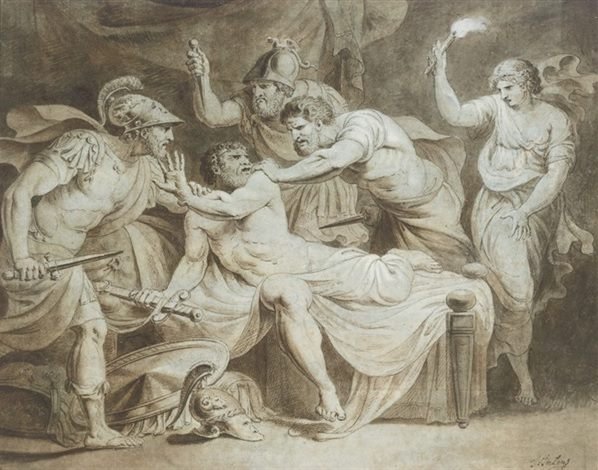
Conflict
In Finnegans Wake much of the action involves conflict between polar opposites. Shem and Shaun, the two sons of HCE and ALP, are the quintessential rival twins or brothers—Romulus and Remus, Cain and Abel, Jacob and Esau, Osiris and Set. Issy is usually accompanied by her mirror image (Issy Through the Looking Glass). HCE himself is being continually challenged by the Oedipal figure (Tristan to HCE’s King Mark, St Patrick to HCE’s Archdruid, Napoleon to HCE’s Wellington, Mordred to HCE’s King Arthur, Goll Mac Morna to HCE’s Finn Mac Cumhail, etc).
The fourth paragraph is a catalogue of such conflicts:
Wills against Wonts
Ostrogoths against Visigoths: oystrygods gaggin fishygods refers to the Battle of the Catalaunian Fields in 451 CE between the Romans and the Huns. The Ostrogoths (Eastern Goths) fought for the Huns, while the Visigoths (Western Goths) fought for Rome.
Aeschylus and Euripides, Athens and Sparta, the Old and the New Brékkek Kékkek ... Kóax is taken from the chorus of frogs in Aristophanes’ comedy The Frogs. Set during the Peloponnesian War between the Delian League (led by Athens) and the Peloponnesian League (led by Sparta), the play sees Dionysus descend into Hades to recover the shade of the recently deceased Euripides, in the belief that Athens needs the great tragedian’s counsel now more than ever, as she faces defeat and annihilation in the war. In Hades, Dionysus witnesses a contest of wits between Euripides and another great Athenian playwright, Aeschylus. By the end of the play Dionysus has come to the realization that Athens needs the older Aeschylus more than Euripides. The Old is always better than the New.
Master McGrath and Rose The Irish and English greyhounds who contested the Waterloo Cup in 1868. Master McGrath’s victory inspired a popular song.
Protestants against Catholics: bidimetoloves echoes the line Bid me to live, and I will live thy Protestant to be in Robert Herrick’s lyric To Anthea Who May Command Him Any thing, while tegotetabsolvers echoes the Latin phrase ego te absolvo (I absolve thee), spoken by a Catholic priest during the Sacrament of Confession. (In Herrick’s lyric, Protestant is probably not being used in its religious sense, but means: “one who protests devotion ... a suitor”—Oxford English Dictionary.
Jacob and Esau The words What true feeling for their’s hayair with what strawng voice of false jiccup! refer to the story in Genesis in which Jacob tricks his father Isaac into giving him the blessing meant for his elder brother the hairy-armed Esau.
Hayfoot against Strawfoot In the American Civil War, recruits were taught to march by tying hay to the left foot and straw to the right foot (Irish dancing was once taught using the same ploy). Their marching chant—Hayfoot, Strawfoot, Belly-full of beansoup—might also remind one of Jacob’s mess of potage. According to A Skeleton Key to Finnegans Wake, Hayfoot and Strawfoot were also the names of two antagonistic brothers (Campbell, Robinson & Epstein 33). See, also, the opening chapter of A Portrait of the Artist As a Young Man:
—Quick march! Hayfoot! Strawfoot!
Lazare Sainéan
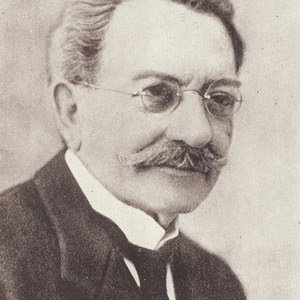
To supplement the prevailing theme of conflict, Joyce peppered this paragraph with a cluster of French military terms. His source for this material was La Langue de Rabelais [The Language of Rabelais], which was written by the Romanian-born philologist Lazare Sainéan. Joyce frequently turned to this volume for inspiration.
When Ulysses was first published in 1922, some commentators compared Joyce’s style to that of the 16th-century French writer François Rabelais. In his classic study of the novel, Stuart Gilbert called it that lively masterpiece of Rabelaisian humour and rich earthiness. (Gilbert 98), so it is only natural that Joyce should have been drawn to Sainéan’s work.
Sainéan spent the last thirty-three years of life in Paris, where La Langue de Rabelais was published between 1920 and 1923. The book catalogues Rabelais’ use of 3770 words of Middle French. For the fourth paragraph of Finnegans Wake, Joyce drew the following words from Sainéan:
Badelaire, « manière d’espée à un dos et un tranchant large et courbant en croissant vers la pointe ainsi que le cimeterre des Turcs » (Nicot) [Badelaire, “a type of sword with one back and one edge broad and curving towards the tip like the scimitar of the Turks” (Jean Nicot)] (Sainéan 70. Under the entry Badeladre, Nicot gives several alternative spellings, but badelaire is not one of them!)
Partisane ou pertuisane, forte pique à fer droit et à deux tranchants [Partisane or pertuisane, a strong pike with a straight iron head and two edges] (Sainéan 72)
Malchus, épée recourbée du genre des braquemards_ [Malchus, a curved sword belonging to the same class as the braquemards] (Sainéan 70. Braquemard is a synonym for Badelaire.)
Migraine, grenade à feu, du prov. migrano, grenade (fruit) [Migraine, fire grenade, from Provençal migrano, pomegranate (fruit) (Sainéan 90)
Verdun, épée longue et étroite, proprement épée de Verdun, ville de tout temps renommée pour ses fabriques de lames d'acier [Verdun, a long and narrow sword, properly sword of Verdun, a town historically renowned for its manufacture of steel blades] (Sainéan 70)
Baliste (Tite-Live) et catapulte (Vitruve), à côté de bélier (1. IV, ch. LXI) [Baliste (Livy and catapulte (Vitruvius, next to battering ram (Book 4, Chapter 61) ] (Sainéan 91)
Camisade (liv IV, ch. XXXII), mot ainsi défini par Monet (1636) « Attaque sur l’ennemi avant l’aube, ou en un autre temps de nuit, des gents armés et couverts de chemises blanches ou autre telle estoffe pour s’entre connoistre » [Camisade (Book IV, Chapter 32), a word defined thus by Philibert Monet (1636) “An attack on the enemy before dawn, or at some other time of night, by armed men dressed in white shirts or similar attire so that they may recognize one another in the dark”] (Sainéan 90)
Aze gaye, zagaie (1) nom de lance ... (1) Ce nom nous est venu des Espagnols (de l’arabe berbère az-zagaya, pointe de lance), d’où l’ital. zagaglia, qui, à son tour, nous a donné la forme moderne zagaie. [Aze gaye, zagaie (1) the name of a type of spear ... (1) This name comes from the Spanish (from the Berber Arabic az-zagaya, point of a spear), or from the Italian zagaglia, which, in its turn, has given us the modern form zagaie] (Sainéan 71)

The Battle of the Catalaunian Fields
The most notable historical conflict that Joyce references in this paragraph is the Battle of the Catalaunian Fields, also known as the Battle of Châlons, which was fought somewhere near Châlons-en-Champagne in the northeast of France on 20 June 451 CE. In this epic encounter, an army of Romans, Visigoths and their Celtic and Germanic allies defeated—allegedly: the outcome is still debated—an army of Huns, Ostrogoths and assorted allies. The battle is sometimes seen as marking the Twilight of the Roman Empire.
The list of leaders who are said to have taken part in this battle reads like a Who’s Who of the 5th century:
The Romans were led by Flavius Aetius, whom the historian Procopius once called The Last of the Romans.
The Huns were led by the legendary Attila the Hun.
The King of the Visigoths, Theodoric I, lost his life in the battle.
His son and successor, Thorismund, was allegedly crowned on the battlefield.
Thorismund’s brother and successor Theodoric II also took part in the battle.
Merovech, the semi-legendary founder of the Merovingian Dynasty fought for the Romans.
Merovech’s supposed son and successor, Childeric, fought for Attila—against his father.
Odoacer, the German soldier who deposed the last Roman Emperor Romulus Augustulus and became the first King of Italy in 476, fought for Attila.

The Bedroom
I have already shown how the first two paragraphs of Finnegans Wake can be read as memory palaces of the master bedroom of the Mullingar House, the pub in Chapelizod where the novel is set. Seven stations in this room are clearly encoded by the phrases and clauses of those paragraphs. The third paragraph, in which the landlord of the Mullingar House falls asleep, also circulates around the room, but the seven stations are much more difficult to discern. This process of obfuscation, caused by the landlord’s loss of consciousness, is taken a step further in the fourth paragraph. This paragraph too takes us on a tour of the same room, past the same seven items of furniture, but the stations are even harder to make out than they were in the third paragraph:
Faucet The opening of the paragraph includes some watery themes (oysters, fish, frogs)
Sink In the second paragraph, this station alludes to Dublin’s patron saint Lawrence in Laurens County’s gorgios. Here we have St Lawrence in Sanglorians.
Fireplace The fireplace is associated with Issy’s voice. Perhaps bidi alludes to Issy both as Biddy and as a split personality (bi- and di- are both prefixes for two), but this is a little strained.
Door In the second paragraph, the door was explicitly associated with the Biblical story of Jacob and Isaac, mentioned above. Here, What true feeling for their’s hayair with what strawng voice of false jiccup! echoes that allusion.
Window In the second paragraph, the window was associated with Issy. Here we have But waz iz? Is eut?, which echoes Tristan’s first words in Richard Wagner’s opera Tristan und Isolde: Was ist? Isolde? [What’s that? Isolde?]
Commode In Finnegans Wake the commode and its hidden chamber pot symbolize death and decay. Here we have explicit references to sewers, peat (decaying vegetation) and ashes.
HCE (and ALP) in Bed Phall has obvious phallic overtones, and pharce includes the letters HCE.
The rainbow of the second paragraph is also invoked here: how hath fanespanned most high heaven the skysign of soft advertisement.
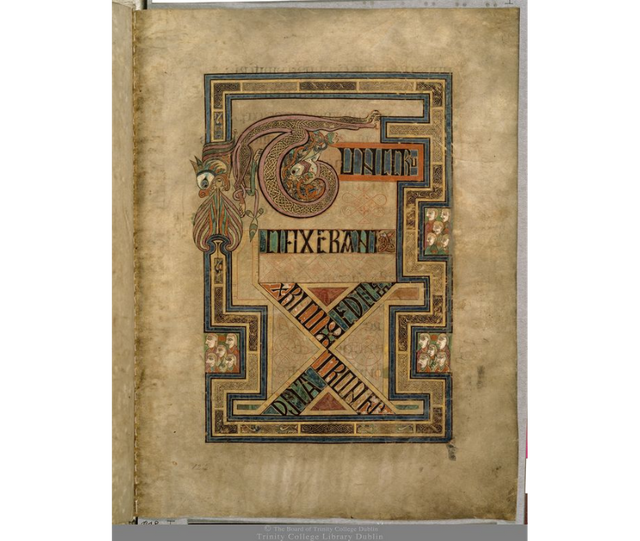
First Draft
The first draft of this paragraph reads:
What clashes of wills & wits were not here & there abouts! What chance cuddleys, what castles aired & ventilated, what biddymetolives sinduced by what egosetabsolvers, what true feeling for hair with false voice of haycup, what rorycrucians byelected by rival emilies! But O here how has sprawled upon the dust the father of fornications but O, my stars & body, how has finespanned in high heaven the skysign of soft advertisement. Was Isot! Ere we sure? The oaks of old rest in peat. Elms leap where ashes lay. Till nevernever may our pharce be phoenished! (Hayman 46)
When Joyce first drafted this passage, he intended to begin with the second sentence, but after writing What cha, he crossed out the last three letters, and continued with clashes of wills etc. For the most part, later drafts elaborated on the elements established in this first draft, or added new elements. There is, however, one element in the first draft that is not present in the published version:
what rorycrucians byelected by rival emilies!
In time, this was amended to:
what rosycrucians contested of simily!
But at some point Joyce simply removed it. I have no idea what this is about. It seems to involve a byelection contested by rival candidates with the names Rory and Emily, but I cannot fathom why the Rosicrucians are thrown into the mix. Rival Emilies reminds one of the two Esthers (Johnson and Vanhomrigh) who represent Issy’s split personality. Possible choices are:
There are a few allusions to the mystical society of the Rosicrucians in Finnegans Wake. One of these even involves candidates:
(and then it need not be lost sight of that there are exactly three squads of candidates for the crucian rose awaiting their turn in the marginal panels of Columkiller, chugged in their three ballotboxes, then set apart for such hanging committees, where two was enough for anyone, starting with old Matthew himself, as he with great distinction said then just as since then people speaking have fallen into the custom, when speaking to a person, of saying two is company when the third person is the person darkly spoken of, and then that last labiolingual basium might be read as a suavium if whoever the embracer then was wrote with a tongue in his—or perhaps her—cheek as the case may have been then) (RFW 097.11-21)
This passage refers to the Tunc page of the Book of Kells (Matthew 27:38), recounting the crucifixion of Christ and the two thieves. Note the three squads of candidates in the margin, and the elaborate ouroboros between them and the text.
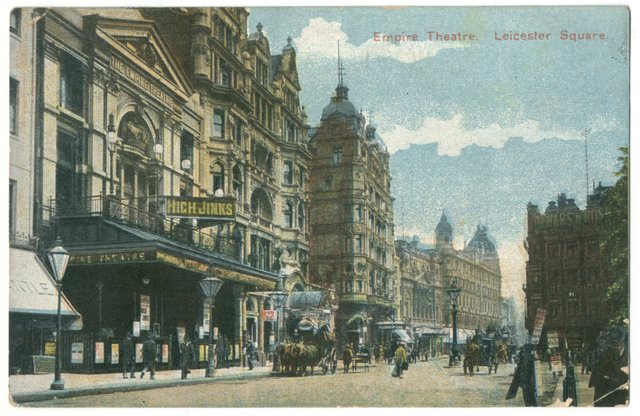
Songs and Music
Bearing in mind that the very title of Finnegans Wake was lifted from a popular song, it should not come as a surprise to the reader that songs—and music in general—play a major role in the book. We have already encountered Robert Burns’ Willy Brew’d a Peck o’ Maut. This paragraph, however, has several musical allusions:
The Frog Chorus In Aristophanes’ comedy, the first choral interlude or parados is sung by the chorus of Frogs. The music, of course, has been lost, but the words survive.
Master McGrath A popular song about the Irish greyhound.
There’s Hair, Like Wire, Coming out of the Empire According to Louis Mink, this is the title of a song about The Empire Theatre, a music hall in London’s Leicester Square (Mink 306). In Our Exagmination round His Factification for Incamination of Work in Progress, Stuart Gilbert describes it as an old music-hall refrain, popular in those “good old days” when the “Empire” in Leicester Square was the happy-hunting-ground of the pretty ladies of London town (Beckett et al 59). When Joyce drafted this paragraph (October 1926), the Empire was mainly being used as a cinema. It was actually demolished and rebuilt as a cinema in 1928.
To Anthea Who May Command Him Any Thing Robert Herrick’s love-lyric, first published in 1648 in his collection Hesperides. It has been set to music a number of times, most notably by John Liptrot Hatton.
Tristan und Isolde Richard Wagner’s greatest opera. Its Celtic connections ensure that it will figure prominently in Finnegans Wake.
This paragraph is also full of sounds, noises, and other auditory sensations:
clashes ... here [hear] ... Brékkek Kékkek Kékkek Kékkek! Kóax Kóax Kóax! Úalu Úalu Úalu! Quáouáuh” ... apeal [a peal of bells] ... larms appalling [alarm bells pealing] ... a toll, a toll [church bells tolling the dead] ... voice ... jiccup! [hiccup!] ... here here [Hear! Hear!]
References
- James S Atherton, The Books at the Wake: A Study of the Literary Allusions in James Joyce’s Finnegans Wake, Southern Illinois University Press, Carbondale IL (1959, 2009)
- Samuel Beckett et al, Our Exagmination round His Factification for Incamination of Work in Progress, New Directions Publishing Corporation, New York (1972)
- Joseph Campbell, Henry Morton Robinson, Edmund L Epstein (editor), A Skeleton Key to Finnegans Wake, New World Library, Novato CA (2005)
- Samuel Taylor Coleridge, The Philosophical Lectures of Samuel Taylor Coleridge, Edited by Kathleen Coburn, the Pilot Press Limited, London (1949)
- Stuart Gilbert, James Joyce’s Ulysses: A Study, Second Edition, Faber & Faber Limited, London (1932)
- David Hayman, A First-Draft Version of Finnegans Wake, University of Texas Press, Austin TX (1963)
- Robert Herrick, Hesperides, Volume 1, William Pickering, London (1846)
- James Joyce, Finnegans Wake, The Viking Press, New York (1958, 1966)
New York (1910) - James Lewis McIntyre, Giordano Bruno, Macmillan and Co, Limited, London (1903)
- Louis O Mink, A Finnegans Wake Gazetteer, Indiana University Press, Bloomington IN (1978)
- Philibert Monet, Invantaire de Deus Langues, Françoise et Latine, Claude Obert, Lyon (1636)
- Jean Nicot, Thrésor de la langue françoyse tant ancienne que moderne,David Douceur, Paris (1606)
- Danis Rose, John O’Hanlon, The Restored Finnegans Wake, Penguin Classics, London (2012)
- Lazare Sainéan, La Langue de Rabelais, Volume 1, Civilisation de la Renaissance, E de Boccard, Paris (1922)
Image Credits
- What Clashes Here: La Bataille de Châlons, Jean-Adrien Guignet (artist), Public Domain
- Samuel Taylor Coleridge: Wikimedia Commons, Washington Allston (artist), Public Domain
- Giordano Bruno: Wikimedia Commons, Johann Georg Mentzel (engraver), Public Domain
- The Death of Alcibiades: Johannes Jacobus Lens (artist), Public Domain
- The Catalaunian Fields?: Montgueux, Troyes, © Simon MacDowall, Fair Use
- The Empire: Postcard from 1907, Public Domain
Useful Resources

our post moves us to very interesting events that deserve to be known and you do a great job.this literature history really very best dear.because you explain this history very perfectly step to step... thanks to sharing for your good post history... very well done.. mu dear friend.... @harlotscurse
great post, very good job,my dear friend @harlotscurse,this literature history really very best dear.because you explain this history very perfectly step to step... thanks to sharing for your good post history.
Wow..very nice literature..and great post i really love your all post all time..and i really love english..thank you so very much for share..dear @harlotscurse
Spam is discouraged by the community, including comment spam.
Tips to avoid being flagged
Thank You! ⚜
Very nice post dear @harlotscurse
And great literature i like this post..thanks for share.
Well post dear @harlotscurse i like literature thanks for share this post..
Wowow..amazing literature..and very nice post i like thos post dear @harlotscurse keep up this post
really informative post..
there have many things to learn from you dear.. @harlotscurse